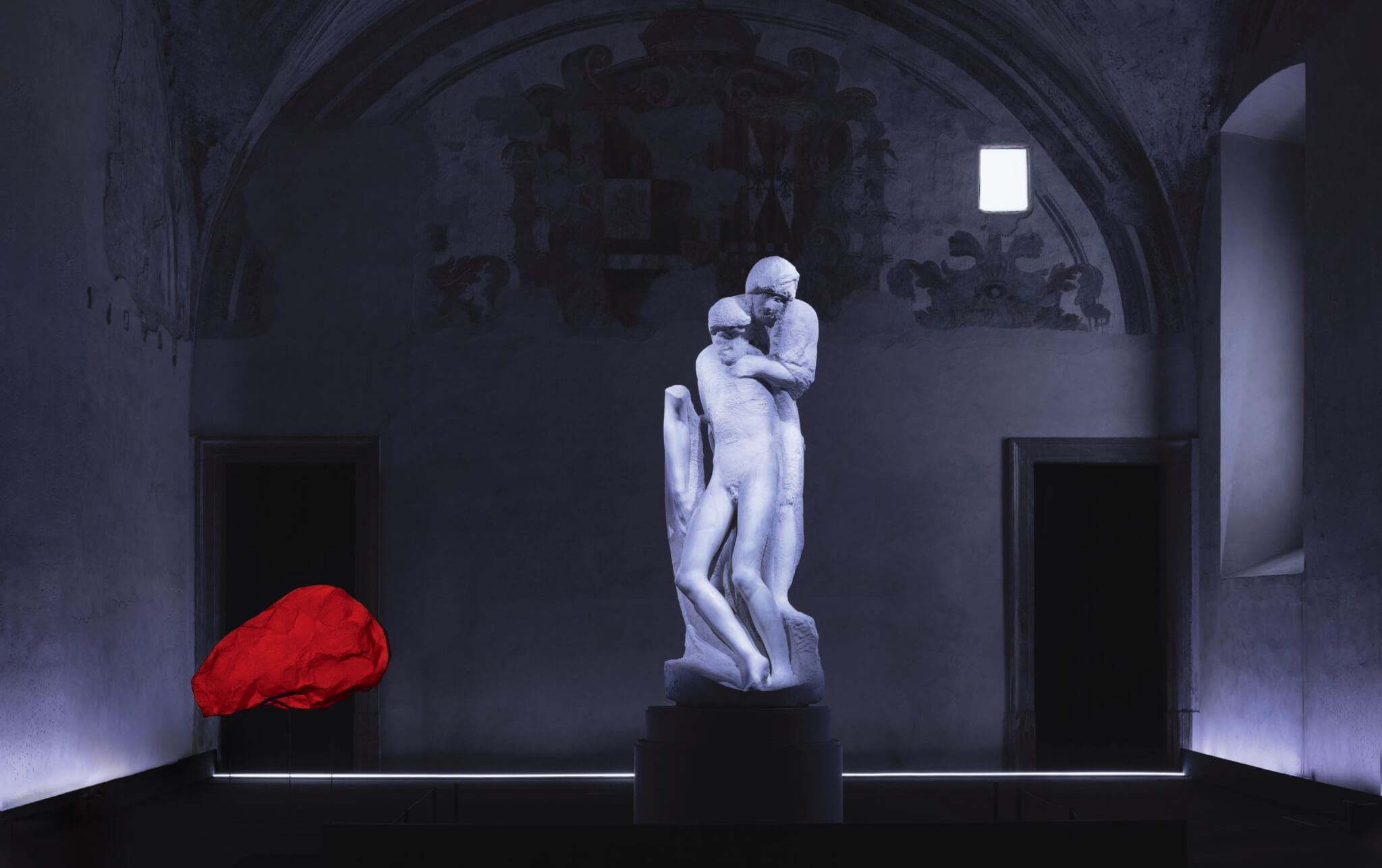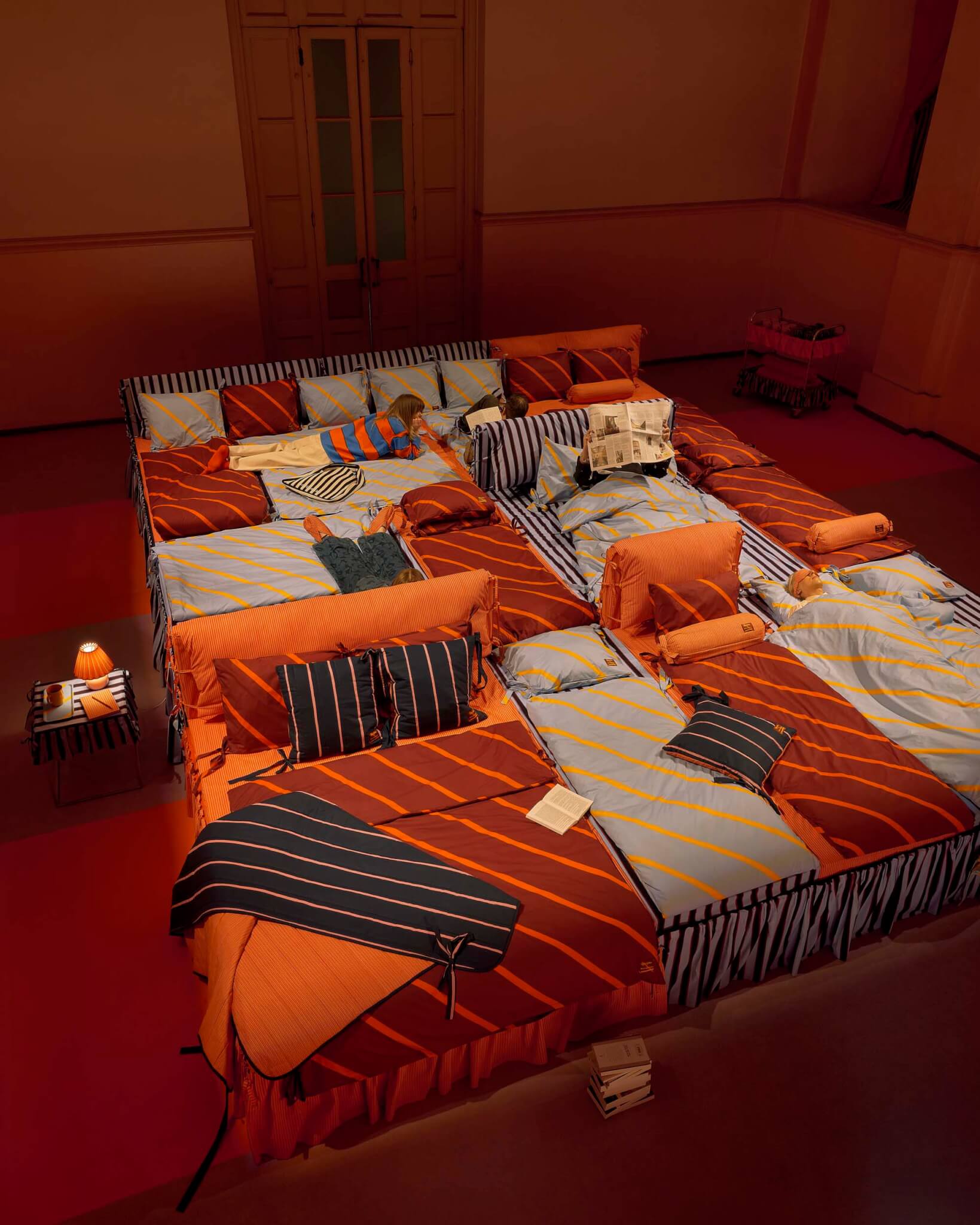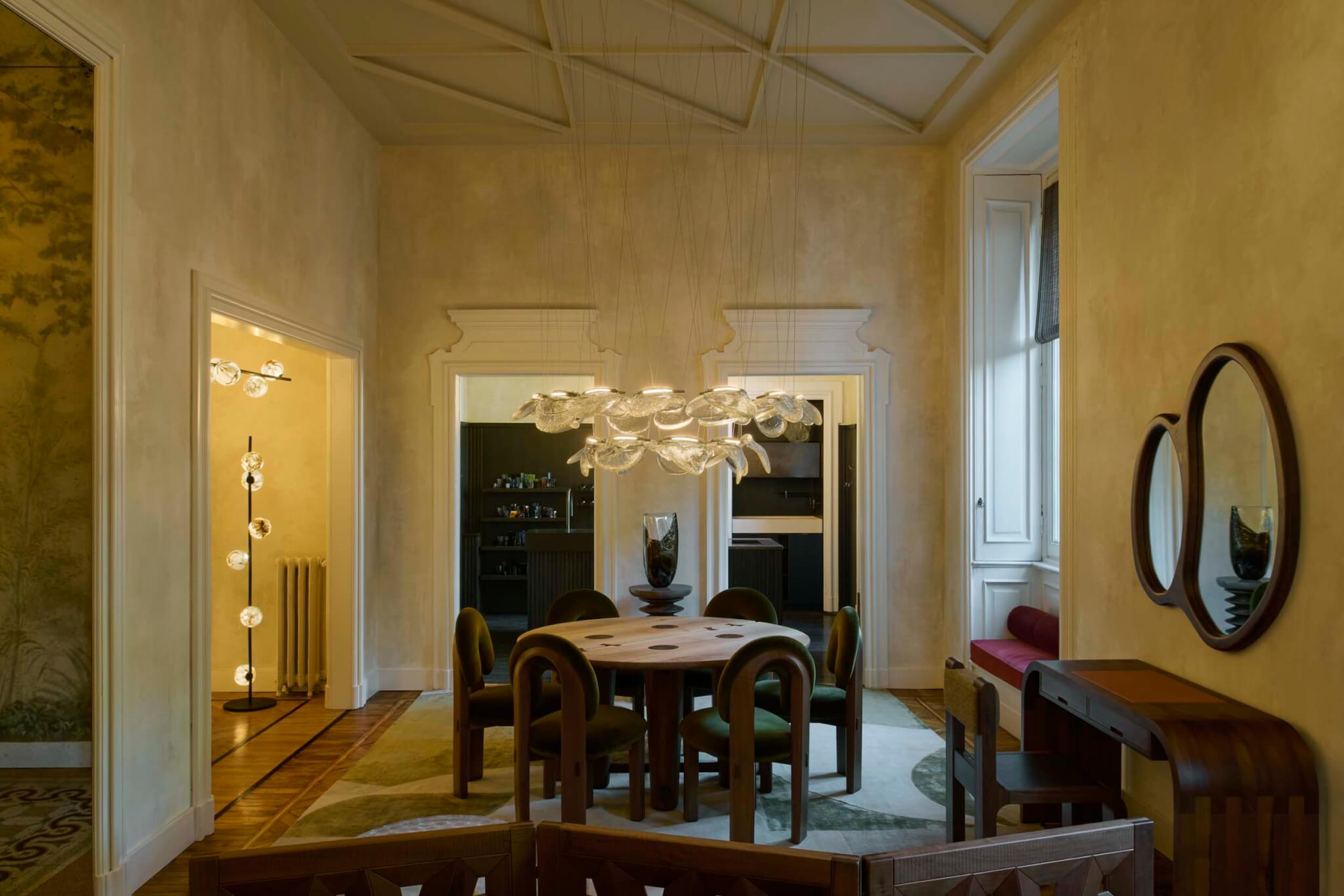As moviemaking is to Los Angeles, so design is to Milan. Homewares and interior fittings are the lifeblood, mythic history, cocktail chatter, and standard billboard fare of Italy’s commercial capital, and never more so than during Salone del Mobile, the mega-function that rolls into town every April. The 63rd annual version of the festivities was positively frenzied, with just over 300,000 people attending the main fair in suburban Rho, with tens of thousands more flocking to events throughout the city center. Through it all, The Architect’s Newspaper was there, taking in the scene at the Oscars of chair, lamp, and postconsumer laminated-bamboo room divider enthusiasts. What did we see?
The Good
“That’s where the cow piss used to go,” said Joseph Grima. The prolific curator and fuori fixture was pointing to channels in the floor of a massive former slaughterhouse on Milan’s eastern perimeter, where he and longtime collaborator Valentina Ciuffi had installed a late-night pop-up bar, restaurant, and exhibition space. Vocla, as the venue was called, was in fact Ciuffi and Grima’s lesser postindustrial coup of the week. At their Alcova, situated for the second year in Varedo, north of Milan, the duo expanded their footprint to include a remarkable former factory space that they populated with installations, including a playful, make-your-own-idea-board workshop from Habitare Materials, as well as a giant machine arm from New Jersey manufacturer Decibel Made, turning out work from Charles Birshaw and others in real time. (Like Vocla’s siting at Ex Macello, this “ex-SNIA” industrial building is slated for redevelopment.) As if that weren’t quite enough, the Grima–Ciuffi affinity also curated a small but power-packed show at gallery Delvis (Un)Limited in the Brera district, featuring not only work by prominent figures like Stefania Ruggiero, but also some of those very figures appearing in person, lying down in turns in an Espace Aygo–designed bed in the middle of the room. The lucky occupant on Wednesday afternoon? None other than Valentina Ciuffi, plainly enjoying a well-deserved rest. “I needed this,” she said.
The Rad
More so than in some recent Milan Design Weeks, this year’s installment appeared determined to push the artistic and intellectual boundaries of the fair. At the heart of Salone’s official cultural program this year was acclaimed avant-garde director Robert Wilson, now 83, whose primary contribution at the historic Castello Sforzesco comprised the lighting of the unfinished final Madonna statue by Michelangelo. Wilson used it as an object “onto which to paint light,” in the words of curator Franco Laera. Though plainly keyed to the lighting theme of the Euroluce subfair at Rho, the piece was remarkably moving and decidedly uncommercial.

The same could (almost) be said of the presentation from Cassina, a collaboration with omni-designers FormaFantasma in which performers spun, gavotted, and shimmied around historic furniture by Le Corbusier, Pierre Jeanneret, and Charlotte Perriand in a spirited exploration of modernism’s wild side. Further expanding the conversation was a series of talks at the Casa Cork, a venue where everything—including the chairs and rugs—was made out of the squishy brown stuff and on which visitors sat as host Tiffany Jow spoke to design biggies, including Yves Béhar and David Rockwell, about the future of sustainable materials. How to sell the public on unconventional, eco-friendly cork? In Rockwell’s view, make it aspirational. “People respond better to a ‘want’ than a ‘should,’” he said.
The Weird
Admittedly, the juxtaposition of a big, brand-heavy trade fair and high-minded aspirations was bound to produce a few peculiar encounters. On entering the gorgeous, Wes Anderson–ish 1950s train that served as a venue for the Prada Frames talk series, a pair of visitors were more than a little surprised to hear architect and researcher Lorenzo Pezzani recite the famous Walter Benjamin quip to the effect that “There is no document of civilization which is not at the same time a document of barbarism.” Presumably this sweeping assessment would have to include not only the materials being produced by the talk series itself but also the output of another, brand-adjacent event across town, Miu Miu’s second annual Literary Club, which included appearances by novelists Geetanjali Shree and Lauren Elkin.

One piece of weirdness that did not feel the least barbaric: Laila Gohar’s bedding debut for Marimekko, which offered all visitors the (rather Delvin-ish) pleasure of sprawling together on a giant mattress, receiving breakfast from liveried attendees. When asked who had thought of the installation, one particularly comfortable-looking attendee in matching pajamas and slippers looked a little surprised. “You’re looking at her,” said Gohar.
The Schlep
Getting to and around the fair is seldom a pleasure, but logistical bothers were especially intense for a few unlucky Salonians on an American Airlines flight from New York to Milan on Monday night. In an incident that made international headlines, a disgruntled passenger complaining about an unavailable meal choice attempted to charge the cockpit halfway into the 8-hour flight; despite being closer to European airspace, the pilot returned the plane to JFK, remaining there till late the next morning, by which point “I’d missed half my meetings,” one exasperated Salone regular reported. (Remarkably, this was the second major delay of the week caused by onboard shenanigans; a Delta flight on Saturday evening was briefly waylaid on the JFK tarmac for similar reasons.)
Of course, it could have been worse: The challenges faced by visitors are little compared to those confronted by exhibitors, especially exhibitors appearing at the fair for the first time. At SaloneSatellite, the Marva Griffin–initiated showcase of emerging designers, Abraham Bendheim of New York–based Juntos was displaying his delicate, wood-hewn chairs, last seen at Alcova’s Miami outpost. Though it was well worth the effort in his view, Bendheim had to do some pretty expensive somersaults to get the work to Milan. “The first quote we got for shipping was for $60,000,” he said. “Luckily we worked that down.”
The Zen
Steps from the Duomo, at the newly opened Palazzo Cordusio Gran Meliá, artist Mirei Monticelli used the astonishing double-height lobby of the historic 19th-century building as a stage set for one of her sinuous, biomorphic lighting sculptures, this one accompanied by a reflective table from American designer William C Stuart and inspired by a Greek mythological mosaic on the palace facade. “I was so amazed by the architecture,” Monticelli said. “When you enter the hotel, you feel like you’ve come through the gates of paradise.”

Across Milan, the illumination inspiration amply flowed: Lighting genie Bocci opened its appointment-only space near Parco Sempione for a party that saw guests flitting under Omer Arbel’s elegant pendants and sconces, currently paired with original furniture from David Alhadeff. Across town, the installation from artist Lachlan Turczan at Google’s “Making the Invisible Visible” show, a black vastness punctuated by cascades of light, could be physically manipulated by visitors. “Erik Satie had this idea of light as furniture,” said the artist. “I wanted to do something like that.” Actual Erik Satie music played quietly in the background at the vowels storefront show for Capsule Plaza. In the thick of it, a fleeting moment of transcendence was set aside at the legendary Pasticceria Sisi, savoring an apricot cornetto and not thinking about design at all.
Ian Volner has contributed articles on architecture and design to The New York Times, The Wall Street Journal, and Architectural Record, among other publications. He is the author of numerous books and monographs, most recently Droese Raney X Design.
→ Continue reading at The Architect's Newspaper
